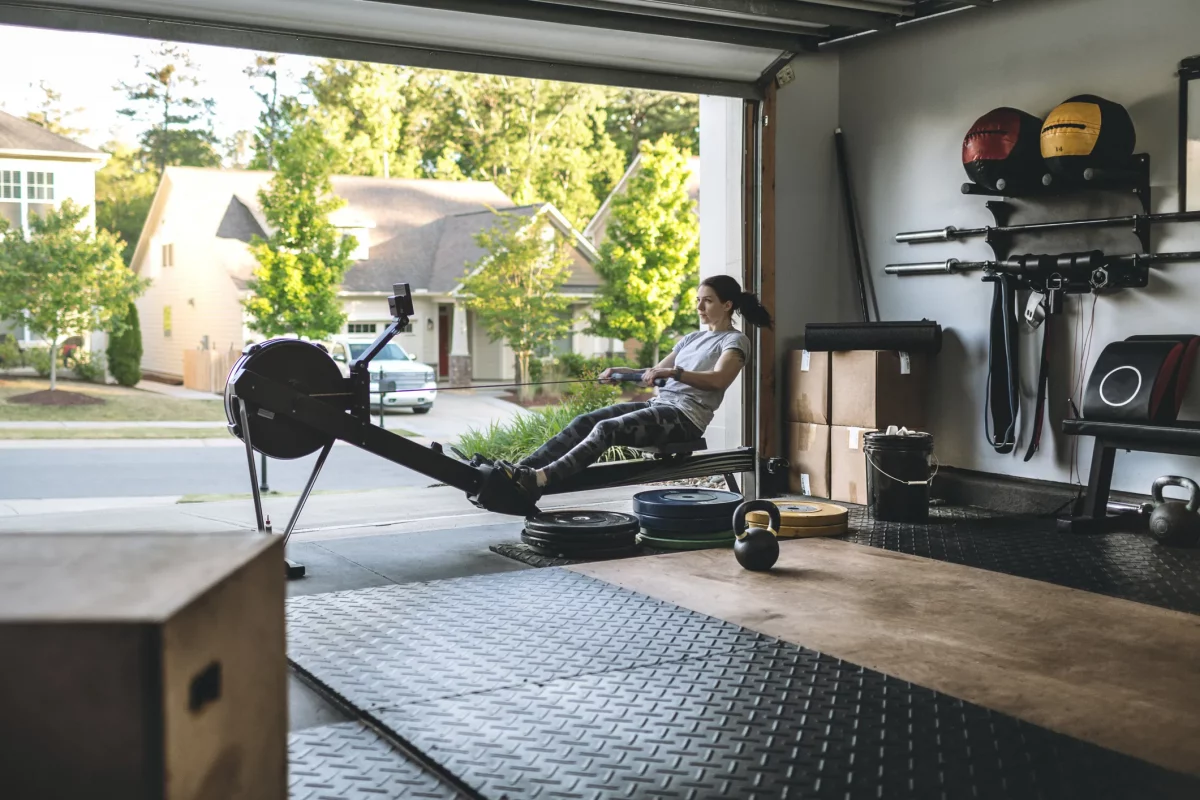Several people prefer doing workout at home rather than at the gym for various reasons. Some folks find the travel exhausting, some are uncomfortable working out alongside others, and others may have qualms touching sweaty equipment. For plenty of others, the environment in a public gym is not right. That’s why the option to build a gym in your home is such a popular idea.
Fortunately, an ergonomic and flexible home gym setup can make working out much more accessible and enjoyable for those who cherish their privacy while exercising. They can focus on their fitness goals better, change the setting anytime they wish, and exercise without inhibitions since no one would be watching.
Those hoping to build a gym in your home garage or spare bedroom can follow the below steps for guidance.
Designate a space
When building the perfect personal gym, the critical first step is to find the right place. You can use a spare bedroom, extra space in your garage, or empty a corner in your living room to accommodate your exercise equipment. The idea is to ensure enough room to keep everything together and still have the space to move stuff around or add new exercise gear.
HIIT and weight lifting enthusiasts will need to designate larger spaces for their gym as compared to those who prefer doing stretches, pilates, or other floor exercises. Consider the lighting, ventilation, and floor material to pick a good place.
Know what equipment the set must have
Investing in the right fitness equipment is key to build a gym in your home that helps you achieve results fast. Typically, you can buy a good-quality set for under $2000 from a reliable retailer.
Browse the following list for an idea of what a set must include.
- A high-quality stainless steel cage with at least a 1000LB load capacity to help you do pull-ups, bench-press, and other exercises.
- An adjustable weight bench that you can change at plenty of angles to work with weights efficiently.
- Ensure it has Olympic barbells made of top-grade steel to help you lift at least 700LBs of weight.
- A collection of different bumper weight plates you can interchange for more intense or varied workouts.
- It must have a set of cable attachments like straight rotating bars or V-shaped bars and tricep pull-down ropes.
- Barbell collars that lock securely onto the Olympic bar and squat shoulder pads are excellent additions.
Ensure appropriate storage
Consider if the equipment you use requires special storage, such as a treadmill or a bike, which you can most often push into a corner of the room post workouts. Yoga mats can be quickly rolled up and placed vertically next to these machines, placed under the bed, or kept on top shelves.
You can purchase a robust stainless steel rack to keep your free weights, plates, barbells, and other heavy-duty equipment. This will ensure you optimize the available space well and maintain a tidy gym when you build a gym in your home.
Add-ons
You should be able to quickly add new equipment to your existing home gym setup, making it diverse and flexible to your needs. Typically, most fitness enthusiasts add a stationary bike and higher free weights, among other things.
Buying from a good, reputable dealer can help make this possible with ease as you can purchase various exercise machines, mats, and other accessories from a single place. Also, you will be assured of quality for your investment, ending up with excellent products at affordable prices.








